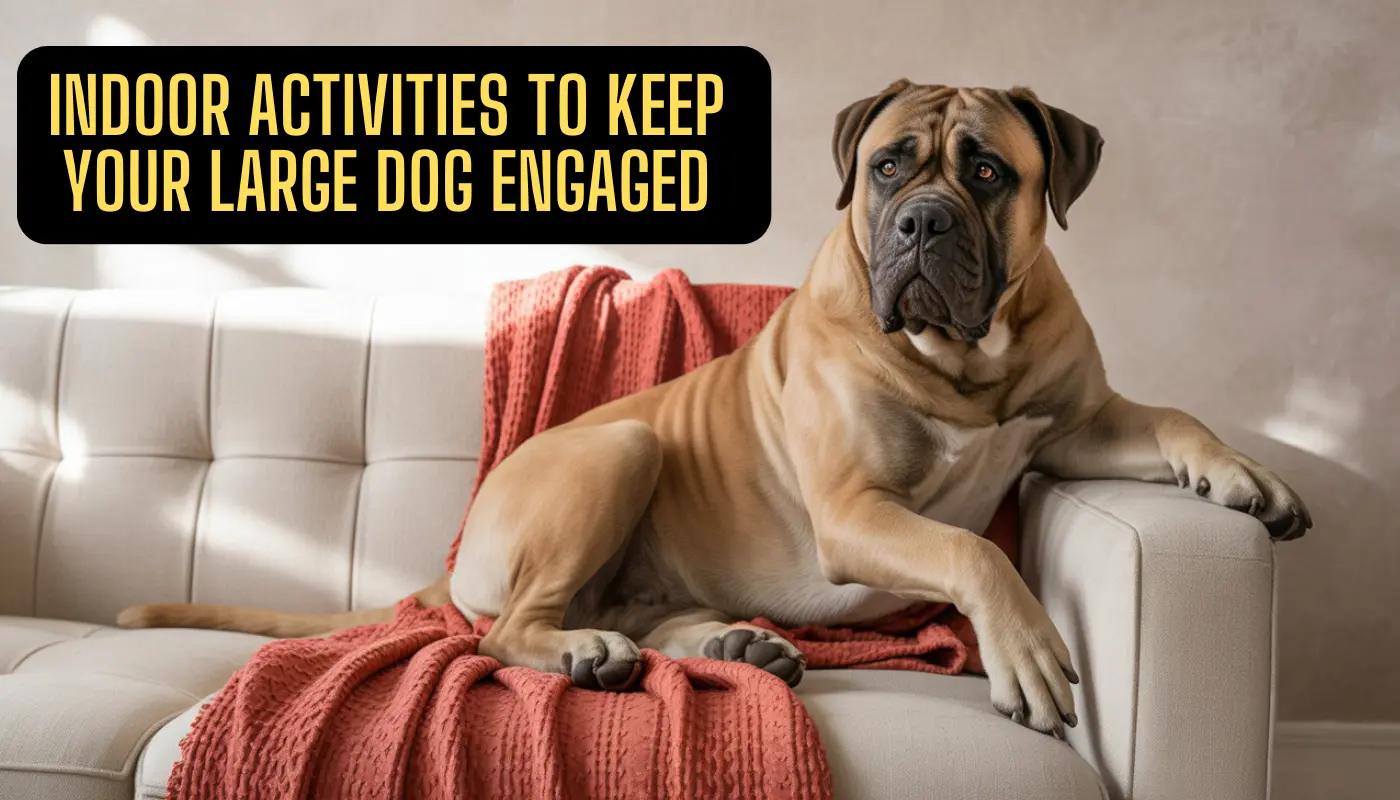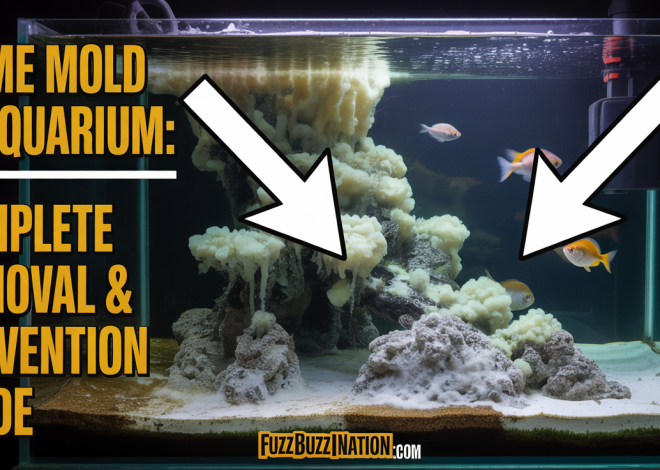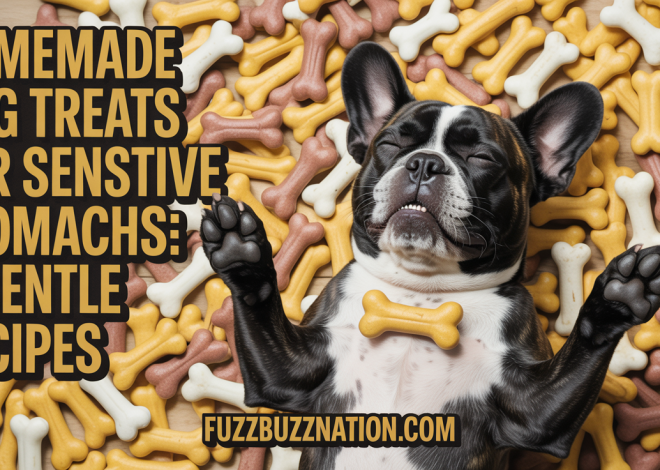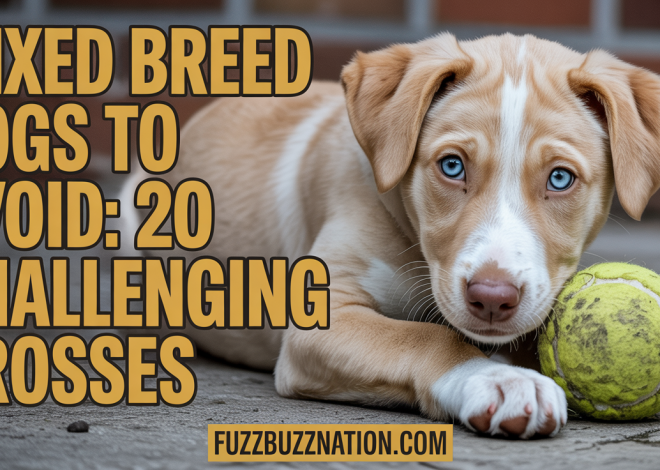
Indoor Games for Large Dogs: Complete 2025 Activity Guide
Finding engaging indoor games for large dogs can transform rainy days from restless chaos into productive bonding time. If you’re dealing with a cooped-up Great Dane, a bored German Shepherd, or any large breed bouncing off the walls, the right indoor games for large dogs can provide mental stimulation and physical exercise without requiring a backyard or perfect weather.
Large dogs present unique challenges when it comes to indoor entertainment. You know that feeling when your 80-pound Labrador starts pacing because they haven’t had enough exercise? It’s like having a furry tornado building momentum in your living room. After researching canine behavior and testing activities with professional dog trainers, I’ve discovered that the best indoor games for large dogs combine mental stimulation with appropriate physical activity to truly tire out these magnificent but energetic companions.
Effective indoor games for large dogs must work within space constraints while providing meaningful engagement. These aren’t just time-killers—they’re essential tools for maintaining your dog’s physical health, mental well-being, and good behavior when outdoor exercise isn’t possible. The right indoor games for large dogs can prevent destructive behaviors, reduce anxiety, and strengthen the bond between you and your canine companion.
Understanding Large Dog Needs: Why Regular Games Matter More
The Energy Challenge of Big Breeds
Large dogs typically have substantial energy reserves and intelligent minds that need regular engagement. When planning indoor games for large dogs, it’s crucial to understand that these breeds often have working backgrounds—many were bred for herding, hunting, or protection work that required both physical stamina and mental acuity.
I’ve observed that large dogs confined indoors without adequate stimulation often develop problematic behaviors like excessive barking, destructive chewing, or hyperactivity. The best indoor games for large dogs address both their physical energy needs and their intellectual requirements, preventing these issues before they start.
Mental vs. Physical Exhaustion
Here’s something many dog owners don’t realize: mental stimulation can be just as tiring as physical exercise for large dogs. A 20-minute training session or complex puzzle game can leave your dog more satisfied than a simple game of fetch. This is why the most effective indoor games for large dogs emphasize problem-solving and cognitive challenges alongside physical movement.
Mental exhaustion also tends to last longer than physical tiredness. A dog that’s mentally stimulated through engaging activities will remain calm and content for hours afterward, making these games incredibly valuable for busy households.
High-Energy Indoor Games for Large Dogs
Tug of War: The Ultimate Strength Challenge
Tug of war ranks among the most effective indoor games for large dogs because it provides intense physical exercise in minimal space. This classic game allows large breeds to use their natural strength while burning significant energy.
Setup Requirements: You’ll need a sturdy rope toy designed for large breeds—cheap toys won’t survive enthusiastic play sessions. Look for toys specifically rated for dogs over 50 pounds.
Safety Guidelines: Always initiate and end the game on your terms. Teach “drop it” and “take it” commands to maintain control. If your dog becomes overly excited or starts growling aggressively (rather than playfully), end the session immediately.
Training Benefits: Beyond physical exercise, tug of war reinforces impulse control and strengthens your leadership role. Many professional trainers consider it one of the most valuable indoor games for large dogs because it combines exercise with obedience training.
Modified Fetch: Adapting the Classic
Traditional fetch requires significant space, but modified versions work perfectly as indoor games for large dogs. The key is adapting throwing distance and ball type to your available space.
Hallway Fetch: Long hallways provide excellent fetch corridors. Use soft rubber balls or fabric toys that won’t damage walls or furniture. The confined space actually adds an interesting challenge as dogs must learn to control their momentum.
Staircase Fetch: If you have carpeted stairs and your dog has healthy joints, stair fetch provides exceptional cardiovascular exercise. Throw a lightweight toy up the stairs and let your dog retrieve it. This variation can tire out large dogs remarkably quickly—usually 10-15 throws are sufficient.
Safety Considerations: Never use staircase fetch with senior dogs, puppies under 18 months, or dogs with joint issues. Always supervise closely and stop if your dog shows any signs of fatigue or difficulty.
Mental Stimulation Games That Exhaust Large Dogs
Scent Work and Treasure Hunts
Scent-based games represent some of the most mentally exhausting indoor games for large dogs. These activities tap into their natural hunting instincts and can provide hours of engagement with minimal setup.
Basic Hide and Seek: Start by hiding high-value treats in obvious locations around one room. As your dog improves, increase difficulty by using harder hiding spots or multiple rooms. Advanced dogs can learn to find specific items by name or scent.
Treat Scavenger Hunts: Create elaborate treasure hunts by hiding treats along a route through your home. Leave scent trails or visual clues to guide your dog. This activity can occupy large dogs for 30-60 minutes while providing substantial mental exercise.
Human Hide and Seek: Hide yourself and call your dog to find you. This game reinforces recall commands while providing mental stimulation and moderate physical exercise. Family members can take turns hiding to extend the game.
Puzzle Toys and Food-Dispensing Games
Interactive puzzle toys rank among the most effective indoor games for large dogs because they combine problem-solving with food motivation. These toys make dogs work for their meals, providing mental stimulation and slowing down fast eaters.
Snuffle Mats: These fabric mats mimic grass where dogs must sniff and dig to find hidden kibble. For large dogs, use multiple mats or hide larger treats to increase difficulty and engagement time.
Treat-Dispensing Balls: Large dogs need appropriately sized puzzle toys that won’t break under enthusiastic play. Look for heavy-duty options designed specifically for powerful breeds.
DIY Puzzle Games: Create homemade puzzles using muffin tins covered with tennis balls, treats hidden in cardboard boxes, or food scattered in towels that dogs must unroll.
Quick Comparison: Most Effective Indoor Games for Large Dogs
| Game Type | Physical Exercise | Mental Stimulation | Space Required | Setup Time |
|---|---|---|---|---|
| Tug of War | High | Moderate | Minimal | 1 minute |
| Staircase Fetch | Very High | Low | Staircase | 1 minute |
| Scent Work | Moderate | Very High | 1-2 rooms | 5-10 minutes |
| Obstacle Course | High | High | Living room | 10-15 minutes |
| Puzzle Toys | Low | High | Floor space | 2-5 minutes |
| Hide and Seek | Moderate | High | Multiple rooms | 2-3 minutes |
Advanced Indoor Games for Large Dogs
DIY Obstacle Courses
Creating obstacle courses represents one of the most comprehensive indoor games for large dogs, combining physical exercise, mental stimulation, and training reinforcement in a single activity.
Basic Course Elements: Use household items like chairs for weaving, broomsticks for jumping, cushions for climbing, and blankets draped over furniture for tunnels. The key is creating varied challenges that require different movements and problem-solving skills.
Safety Setup: Ensure all obstacles are stable and appropriately sized for your dog. Large breeds need higher jumps and wider weaving spaces than smaller dogs. Always supervise closely and adjust obstacles if your dog seems uncomfortable or confused.
Progressive Difficulty: Start with simple courses and gradually add complexity as your dog masters each element. Advanced courses might include directional commands, multiple levels, or specific sequences that must be completed in order.
Obedience Training Games
Training sessions disguised as games provide excellent mental exercise while reinforcing important behaviors. These activities work particularly well as indoor games for large dogs because they require focus and concentration.
Trick Training Sessions: Teach complex tricks like “close the door,” “bring me my slippers,” or “tidy up toys.” Large dogs often excel at practical tricks that utilize their size and strength.
Command Sequences: Create games where dogs must perform multiple commands in sequence to earn rewards. For example: sit, stay, down, roll over, then come. This builds memory, focus, and impulse control.
Distance Commands: Practice commands from different rooms or increasing distances. This mental challenge helps large dogs learn to focus despite distractions and strengthens their responsiveness.
Age-Specific Indoor Games for Large Dogs
Puppy-Safe Activities (8-18 months)
Large breed puppies need special consideration when selecting indoor games. Their joints are still developing, making high-impact activities potentially harmful.
Gentle Mental Games: Focus on puzzle toys, basic training, and low-impact activities. Avoid jumping, excessive stair climbing, or intense physical games until growth plates close.
Socialization Games: Use indoor time for positive exposure to new sounds, textures, and experiences. This mental stimulation supports healthy development while keeping puppies engaged.
Adult Dog Activities (18 months – 7 years)
Adult large dogs can participate in the full range of indoor activities. This is when you can introduce more physically demanding games and complex mental challenges.
High-Intensity Options: Tug of war, agility courses, staircase fetch, and extended training sessions all work well for healthy adult dogs.
Rotation Strategy: Vary activities to prevent boredom and maintain engagement. Rotate between physical games, mental challenges, and training sessions throughout the week.
Senior Dog Modifications (7+ years)
Senior large dogs benefit from modified versions of indoor games that accommodate reduced mobility and energy levels.
Low-Impact Alternatives: Focus on scent work, gentle puzzle toys, and short training sessions. Avoid high-impact activities like jumping or intense physical games.
Joint-Friendly Options: Choose activities that don’t stress aging joints while still providing mental stimulation and light physical exercise.
Safety Considerations for Indoor Games
Space Management
Large dogs require careful space management during indoor games. Their size and enthusiasm can quickly overwhelm small areas or lead to accidents.
Room Preparation: Remove breakable items, secure loose rugs, and ensure adequate clearance for movement. Large dogs need more space than you might initially think.
Supervision Requirements: Always supervise active games, especially those involving jumping or running. Large dogs can accidentally damage property or injure themselves if games become too enthusiastic.
Equipment Safety
Toy Selection: Choose toys specifically designed for large breeds. Toys that are too small pose choking hazards, while cheaply made toys can break and create safety issues.
Regular Inspection: Check toys and equipment regularly for wear. Large dogs can destroy toys quickly, creating potential hazards from broken pieces.
Health Monitoring
Overexertion Signs: Watch for excessive panting, drooling, or fatigue. Large dogs can overheat quickly during intense indoor play, especially in warm environments.
Joint Health: Be particularly cautious with activities that involve jumping or sudden direction changes. Large breeds are prone to joint issues that can be exacerbated by inappropriate exercise.
Seasonal Indoor Game Strategies
Weather-Dependent Planning
Bad weather often drives large dogs indoors for extended periods. Having a repertoire of engaging indoor games becomes essential during these times.
Rainy Day Rotations: Plan 2-3 different activities for rainy days to prevent boredom. Combine high-energy games with mental challenges and training sessions.
Winter Engagement: During long winter months, indoor games become crucial for maintaining your dog’s physical and mental health. Increase the frequency and variety of activities during periods of limited outdoor access.
Holiday and Special Occasion Games
Visitor Accommodation: When guests are present, choose calmer indoor games that won’t overwhelm visitors or create chaos. Puzzle toys and training sessions work well during social gatherings.
Travel Preparation: Practice indoor games that can be adapted to different environments. This preparation helps when traveling or staying in unfamiliar locations.
Troubleshooting Common Issues
Overexcitement Management
Some large dogs become overly stimulated during games, leading to rough play or difficulty stopping activities.
Excitement Control: Build in breaks during games and practice “settle” commands. End games while your dog is still engaged rather than waiting for exhaustion.
Calming Strategies: Follow high-energy games with calming activities like puzzle toys or gentle training sessions to help dogs wind down appropriately.
Space Limitations
Apartment Adaptations: Even small apartments can accommodate effective indoor games with creativity. Focus on mental stimulation and low-impact physical activities.
Furniture Protection: Use furniture covers and rearrange rooms as needed to create safe play spaces. Consider dedicating one room primarily to dog activities.
Multi-Dog Households
Resource Management: When playing games with multiple large dogs, manage resources carefully to prevent competition or conflict.
Individual Attention: Some games work better with individual dogs rather than groups. Rotate dogs through activities to ensure each gets adequate attention and exercise.
Frequently Asked Questions About Indoor Games for Large Dogs
How long should indoor game sessions last for large dogs?
Most indoor game sessions should last 15-30 minutes for optimal benefit. Large dogs can become overstimulated with longer sessions, and shorter, more frequent games are often more effective than marathon play periods. Mental stimulation games may tire dogs more quickly than physical games.
Can indoor games really replace outdoor exercise for large dogs?
While indoor games are excellent supplements, they can’t completely replace outdoor exercise for most large dogs. However, during bad weather or when outdoor access is limited, a combination of high-energy indoor games and mental stimulation can adequately meet their exercise needs for short periods.
What’s the best indoor game for a destructive large dog?
Scent work and puzzle toys are excellent for destructive dogs because they redirect natural behaviors into appropriate outlets. These dogs often destroy things out of boredom, so providing engaging mental challenges can significantly reduce destructive behaviors.
Are there indoor games that multiple large dogs can play together?
Yes, but choose games carefully. Hide and seek, group training sessions, and some obstacle course activities work well with multiple dogs. Avoid competitive games like tug of war or resource-guarding activities when multiple large dogs are present.
How do I know if my large dog is getting enough mental stimulation?
A mentally stimulated large dog will be calmer, more obedient, and less likely to engage in destructive behaviors. They should settle down relatively quickly after games and show interest but not obsession with activities. Signs of insufficient stimulation include excessive barking, destructive chewing, or hyperactivity.
Can senior large dogs still play indoor games?
Absolutely! Senior dogs benefit greatly from modified indoor games that accommodate their changing needs. Focus on gentle mental stimulation, short training sessions, and low-impact activities that don’t stress aging joints while still providing engagement.
What equipment do I need to start playing indoor games with my large dog?
Basic equipment includes sturdy toys appropriate for large breeds, treats for motivation, and household items for obstacle courses. Start with simple items like rope toys, puzzle feeders, and tennis balls, then expand based on your dog’s interests and abilities.
How often should I rotate different indoor games?
Rotate games every few days to maintain interest and prevent boredom. Most dogs enjoy variety, and rotating activities ensures they’re challenged in different ways. Keep favorite games in regular rotation while introducing new activities periodically.
Are there indoor games that help with training large dogs?
Many indoor games double as training opportunities. Obedience-based games, trick training sessions, and activities that require following commands all reinforce training while providing entertainment. These games are particularly effective because they combine fun with learning.
What should I do if my large dog becomes too excited during indoor games?
If your dog becomes overstimulated, immediately stop the game and practice calming commands like “settle” or “place.” Build excitement control into games by incorporating breaks and ending activities while your dog is still engaged rather than overexcited.
Creating Your Indoor Games Schedule
Weekly Planning Template
Monday: High-energy games (tug of war, fetch) Tuesday: Mental stimulation (puzzle toys, scent work) Wednesday: Training games (tricks, obedience) Thursday: Moderate activity (obstacle course) Friday: Combination activities (hide and seek with training) Saturday: Extended play session (multiple games) Sunday: Gentle activities (puzzle toys, calm training)
Adapting to Your Dog’s Needs
High-Energy Dogs: Emphasize physically demanding games and longer sessions Calm Dogs: Focus on mental stimulation and gentle physical activities Senior Dogs: Prioritize low-impact mental challenges and short sessions Puppies: Use gentle games that support development without stressing growing bodies
Equipment and Setup Guide
Essential Equipment for Indoor Games
Sturdy Rope Toys: For tug of war and interactive play Puzzle Feeders: For mental stimulation during meal times Soft Balls: For safe indoor fetch games Treat Dispensing Toys: For solo mental exercise Non-Slip Mats: For secure footing during active games
DIY Equipment Ideas
Homemade Obstacle Courses: Use chairs, broomsticks, and cushions Treat Puzzles: Muffin tins with tennis balls, boxes with hidden treats Snuffle Mats: Rubber mats with fabric strips for hiding kibble Tug Toys: Braided old t-shirts or towels (supervised use only)
Conclusion: Transforming Indoor Time into Quality Engagement
Mastering indoor games for large dogs transforms unavoidable indoor time from a challenge into an opportunity for bonding and enrichment. These activities aren’t just about burning energy—they’re about meeting your dog’s complex needs for mental stimulation, physical exercise, and social interaction within the constraints of indoor living.
The best indoor games for large dogs combine creativity with understanding of canine behavior and breed-specific needs. Whether you’re dealing with temporary weather restrictions or long-term space limitations, a well-planned selection of indoor activities can keep your large dog happy, healthy, and well-behaved.
Remember that consistency and variety are key to success with indoor games. Start with simple activities, observe your dog’s preferences and energy levels, and gradually build a repertoire of games that work for your specific situation. With patience and creativity, you can provide your large dog with engaging indoor experiences that rival any outdoor adventure.
The investment in learning and implementing effective indoor games pays dividends in improved behavior, stronger bonding, and the peace of mind that comes from knowing your large dog’s needs are met regardless of external circumstances.


